#octocorallia
Photo
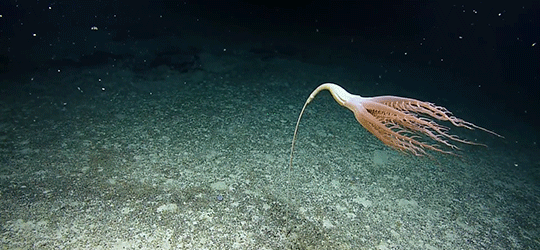
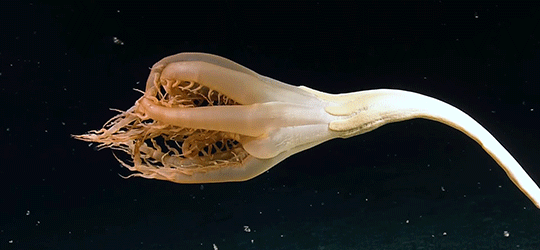
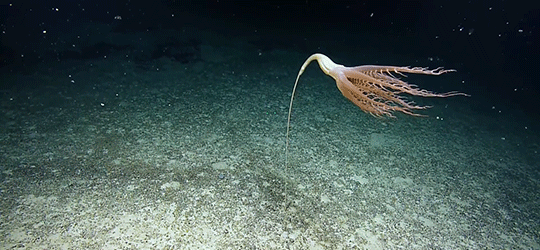

At 2994 meters on a never-before-surveyed seamount north of Johnston Atoll, the team made a thrilling discovery — the chance to examine an animal spotted for the very first time in the Pacific Ocean! The sea pen, a colonial cnidarian, had a single large feeding polyp with pinnate (barbed) tentacles stretching over 40 cm from its 2-meter-long stalk.
Solumbellula monocephalus is the only described species in the genus and until this sighting was only known to live in the North and South Atlantic and Indian Oceans. Before this discovery of the colony, the animal had never been seen in the Pacific Ocean. Further review of the footage and this sample will help experts determine if this is the first Pacific S.monocephalus or potentially a new species in this ocean basin.
Enjoy some beautiful close-ups of this coral relative that astounded our team with a detailed view of its stinging feeding tentacles that capture marine snow and food particles drifting by its home on an underwater mountain sedimented saddle. Two individuals were spotted on this dive, confirming a population within the protection of the Johnston Unit of Pacific Remote Islands Marine National Monument. This huge range expansion of Solumbellula in the Pacific Ocean reminds us how important ocean exploration efforts are to understanding this diversity of our planet!
Learn more about this expedition funded by NOAA Ocean Exploration via the Ocean Exploration Cooperative Institute
🎥video here🎥
#sea pen#marine#ocean#Pacific Ocean#cnidarians#octocorallia#pennatulacea#NOAA Ocean Exploration#Ocean Exploration Cooperative Institute
269 notes
·
View notes
Text
Taxonomy Tournament: Cnidarians


Octocorallia. This class is made up of aquatic colonial animals with 8-fold symmetry. It includes soft corals and sea pens.
Hexacorallia. This class is made up of aquatic animals with 6-fold symmetry. It includes stony corals and sea anemones
#animals#biology#polls#poll tournament#zoology#sea pens#coral#cnidarians#sea anemones#Octocorallia#Hexacorallia#0x35v0x4a
51 notes
·
View notes
Text

The polyps of a soft coral (Dendronephthya australis) off the coast of Kurnell, NSW, Australia
by John Turnbull
#soft corals#corals#cnidarians#dendronephthya australis#dendronephthya#nephtheidae#alcyonacea#octocorallia#cnidaria#wildlife: australia#wildlife: oceania
68 notes
·
View notes
Text



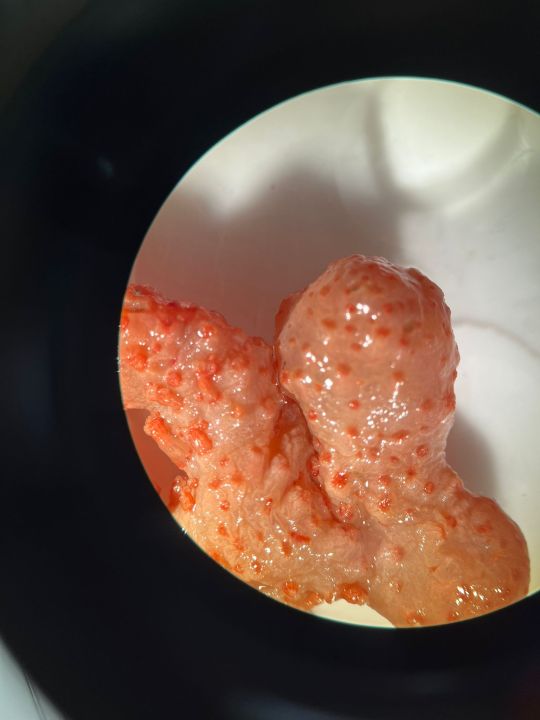
Some cool Octocorallia form a zoology project, such cool animals that sometimes look weird and fleshy, 10/10.
10 notes
·
View notes
Text

[Bamboozled! Resolving deep evolutionary nodes within the phylogeny of bamboo corals (Octocorallia: Scleralcyonacea: Keratoisididae)]
Morrissey et al. (2023)
258 notes
·
View notes
Text

octocorallia
#splatoon#splatoon 2#splatoon 3#side order fanart#side order#side order splatoon#splatoon 3 side order#marina#marina splatoon#marina ida#marina iida#adioart
21 notes
·
View notes
Text
Side Order of Coral
Some random information on corals that may or may not relate to the Splatoon 3 DLC (Side Order)! We don’t have any real idea what the story is going to be about, but I guess it can be food for thought. Included pictures from the trailer and corals, so it got a little long...
Under the cut it goes!
First, all corals are made up of polyps; the majority of these tiny organisms make an exoskeleton at their base made of calcium carbonate. They’re actually related to jellyfish and anemones! Most corals are a colonial organism, meaning they are made up of hundreds to hundreds of thousands of polyps living in a group. There are two main sub-classes of coral, depending on how many tentacles each polyp has; six (Hexacorallia) or eight (Octocorallia). Hexacorallia includes the hard corals, while Octocorallia includes the soft. Most corals can photosynthesize, but they also eat plankton or small animals that get stung by the nematocysts on the polyps’ tentacles, in the same manner as jellyfish. Feeding usually happens at night when the polyps stick out of their pockets in the body of the coral.
When you think “coral”, you probably think of colorful coral reefs. Most of these types get their colors from a type of symbiotic organism called “zooxanthellae”! They live with the coral, inside the tissues of the polyps, where they’re protected and thereby able to photosynthesize. The largest part of the nutrients produced by the zooxanthellae’s photosynthesis (almost 90%) is taken in by the coral, and allows the polyps to grow and reproduce, expanding the coral reef. However, most of the corals we saw in the trailer are bleached; this can happen for a variety of reasons, such as pollution, rising water temperatures, or other stress on the coral, which causes the polyps to expel the zooxanthellae and lose their color. If they go long enough without their zooxanthellae, the coral eventually dies.

[Image of the main Octoling standing in a strange, white Inkopolis Square. The coral in the background is bleached and crumbling.]
When a coral dies, it leaves behind its skeleton. This skeleton is covered in tiny holes, showing where the polyps used to be.
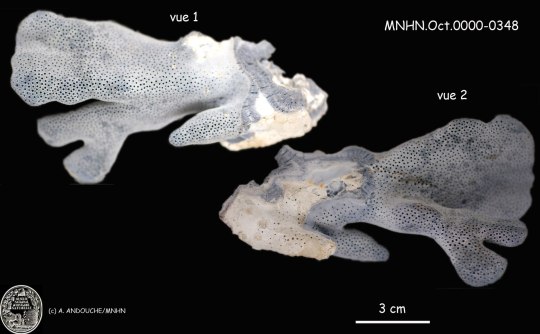
[Image of a blue coral skeleton, covered in little holes the polyps used to live in. Blue coral is the only octocoral known to form a stony body.]
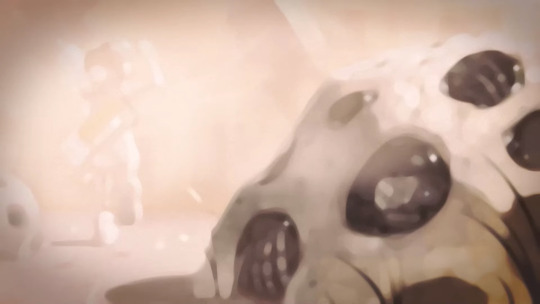
[Image from the SO trailer; foreground object looks like a skull, but with far too many holes. Possible coral skeleton.]
Slight side note, but as anemones also get their colors from their zooxanthellae, I thought it was interesting that Annie (in Inkopolis Plaza) also appears to be losing her color. Her hair is much paler than it was in the first game, suggesting the effects we see in Side Order may be making their way around...

[Image comparing Annie in Cooler Heads from the first game (left) to the thrid game’s DLC (right).]
Onto coral types! Stony corals, as the name would suggest, build themselves a hard skeleton. These are the types that form the coral reefs, and come in a huge variety of shapes and sizes. They tend to prefer nutrient-poor water with access to lots of sunlight, relying on their zooxanthellae for a large portion of their nutrients. The majority of stony coral polyps are Hexacorallia, meaning their polyps have six tentacles each. We saw at least one hard coral in the trailer; the brain coral! As the name suggests, they have a winding growth pattern that makes their surface look like a brain. We’ll get back to this in a moment!

[Image of a type of bleached brain coral]

[Image of the brain-like object (probably coral) from the SO trailer]
Soft corals, for the most part, do not form a rigid skeletal structure. They tend to form a tougher core with a fleshy exterior for protection, and as a result are more flexible than stony corals. The are also colonial, but don’t form reefs; however, they are still part of the reef ecosystem. Some types can also survive and thrive in the deep sea, getting their nutrients by filter feeding as they sway in the current instead of zooxanthellae. All soft coral polyps are Octocorallia, as they have eight tentacles.
This, of course, could have a potential connection to another eight-tentacled someone who happened to spend some time in the Deepsea...
Returning to our brain coral thought; corals also have their own nervous system! Their nervous system is of the most simple type, lacking a brain, and is referred to as a “nerve net”. This net connects all the polyps, allowing them to transmit impulses in any direction; it is also what allows anemones and jellyfish to swim, though slowly and largely at the mercy of the current. Further, the nerve net of cnidarians (corals, jellyfish, anemones, etc.) is thought to be the evolutionary precursor to bilaterian nervous systems; those involving a central nervous system with a brain. There are a few instances of nerve-like images, which also bear resemblance to some types of sea fan (a soft coral), and could tie into a potential “experiment”-based story line (similar to Octo Expansion).

[Image from Side Order trailer; pink lines creep down the white walls and over the black ground in a similar manner to veins or nerves.]
Finally, polyps reproduce either sexually (via spawning) or asexually, budding off clones of themselves to grow their main body/skeleton. Cloning can also happen with fragmentation, when a chunk of the coral is broken off by a storm/etc., and the colony begins to from a separate colony. As we saw clones in the trailer, this ties in nicely to our ongoing coral theme.

[Image of what appears to be clones of the main Octoling; the ones farther back are bleached.]
We don’t yet know what this DLC is going to be about, but coral, and coral imagery, features heavily in the trailer. All of it is dead.
Sources: [1], [2], [3], [4]
#splatoon#splatoon 3#side order (splatoon)#octoling#agent eight#agent 8#it's coral time babeyyyy#there were a few times I wanted to speculate about what it could mean#but i felt like sticking with just information might be best#if you have any spec thoughts please drop them on me tho!!#or don't and make a separate post i lurk in the tag sometimes#annie (splatoon)
19 notes
·
View notes
Link
A realistic environment with a slight mix of fantasy is the Underwater Cave. The underwater cave comes with 12 unique and detailed coral and foliage props. There are two fog settings for near and far-away renders in the material presets. The set also comes with a complete preload scene subset. Any contemporary underwater scene, fantasy mermaid, or treasure scene would require the Underwater Cave, get yours today! What's Included and Features XI Underwater Cave: (.DUF) Scene Subsets: Zero Props: XI UC Brain Coral XI UC Bubble XI UC Clathrata XI UC Crystal XI UC Live Rock XI UC Octocorallia XI UC Outcrop XI UC Petals XI UC Rock XI UC Staghorn XI UC Stalactites XI UC Tree Rock XI UC Tree Materials: XI UC Fog Far XI UC Fog Near Textures Include: 87 Texture, Bump, Metallic, Normal, Roughness, Emissive and Transparency Maps (4096 x 4096) Daz Studio Iray Material Presets (.DUF) Compatible Software: Daz Studio 4.21 Install Types: DazCentral, Daz Connect, DIM, Manual Install Coming soon: https://3d-stuff.net/ #daz3d #dazstudio #3drender #3dart #daz3dstudio #irayrender #3dartwork #blender #blenderrender #blenderart #noaiart #noaiwriting #noai https://3d-stuff.net/
0 notes
Photo
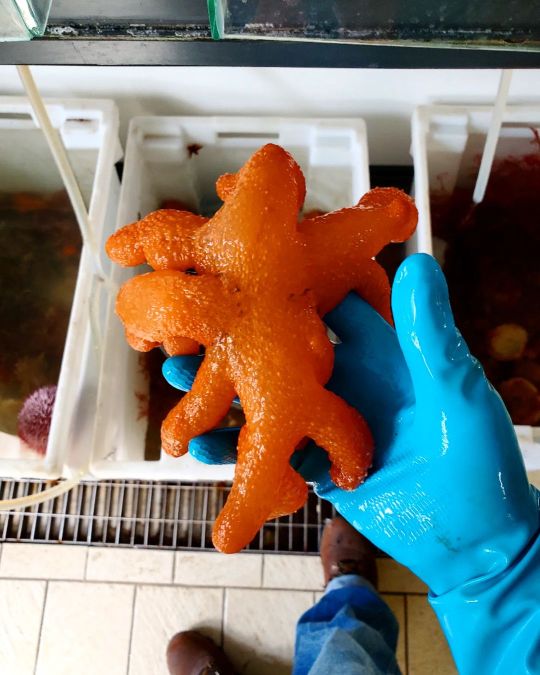
Taken the same day as the previous post, this is a dead man's fingers (Alcyonium digitatum), or död mans hand. In Sweden, they occur on the west coast within the sub-littoral zone, wherever there is strong water flow, attached to rocks, shells, and stones in areas uninhabitable for algae forming whole colonies, even occasionally on crabs and gastropods. Because of their dark environments, these corals don't feed with zooxanthellate and instead feed on plankton. #animal #animals #djur #wildlife #natur #naturliv #nature #invertebrate #invertebrates #octocoral #fauna #coral #corals #koralldjur #softcoral #softcorals #hornkorall #hornkoraller #cnidarian #cnidarians #animalia #cnidaria #octocorallia #alcyonacea #alcyoniidae #alcyonium #alcyoniumdigitatum #deadmansfingers #dödmanshand (at Klubbans biologiska station) https://www.instagram.com/p/CeI7qp5q5m3/?igshid=NGJjMDIxMWI=
#animal#animals#djur#wildlife#natur#naturliv#nature#invertebrate#invertebrates#octocoral#fauna#coral#corals#koralldjur#softcoral#softcorals#hornkorall#hornkoraller#cnidarian#cnidarians#animalia#cnidaria#octocorallia#alcyonacea#alcyoniidae#alcyonium#alcyoniumdigitatum#deadmansfingers#dödmanshand
0 notes
Text
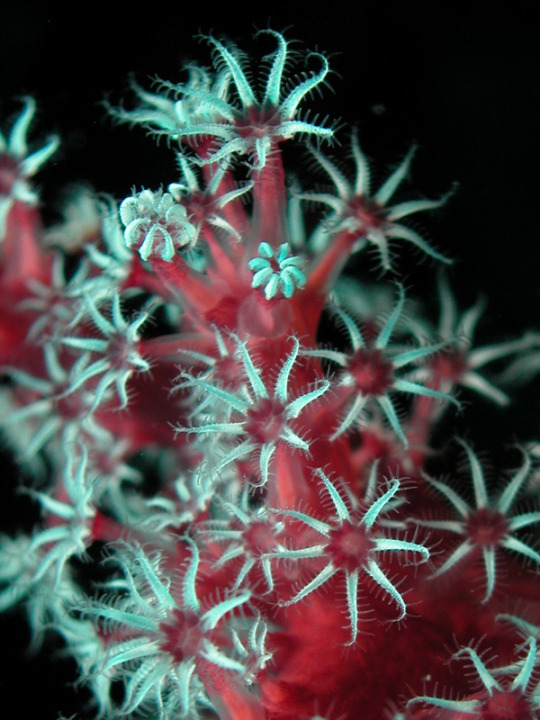
octocorallia
15 notes
·
View notes
Photo

Violescent sea-whip (Paramuricea clavata)
Photo by Yann Querrec
#violescent sea whip#paramuricea clavata#paramuricea#plexauridae#holaxonia#alcyonacea#octocorallia#anthozoa#cnidaria
17 notes
·
View notes
Text
Taxonomy Tournament: Cnidarians
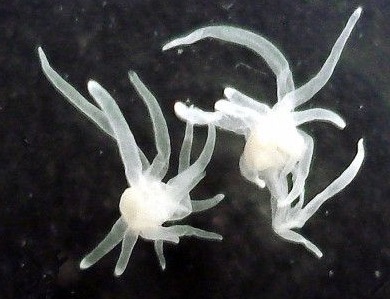

Polypodiozoa. This class contains only one species, P. hydriforme, which is one of the few animal parasites that lives inside the cells of other animals (fish)
Octocorallia. This class is made up of aquatic colonial animals with 8-fold symmetry. It includes soft corals and sea pens.
#animals#biology#polls#poll tournament#zoology#Animal parasite#cnidarians#sea pens#coral#Polypodiozoa#Octocorallia#0x35v0xca#animal tournament#Animal Tournament Round 1
12 notes
·
View notes
Photo
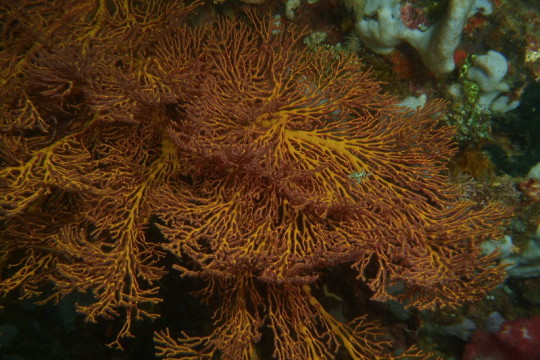
Knotted fan coral (Melithaea ochracea) off the coast of Southern Leyte, Philippines
by Kary Mar
#knotted fan coral#corals#cnidarians#Melithaea ochracea#Melithaea#Melithaeidae#alcyonacea#octocorallia#cnidaria#wildlife: philippines
240 notes
·
View notes
Photo
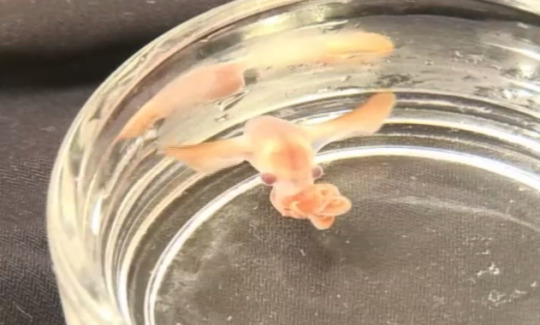
DUMBO OCTOPUS HATCHLINGS LOOKS LIKE ADULTS
Cirrate octopods, cephalopods known as the dumbo octopuses are among the largest invertebrates of the deep sea. These organisms have long been known to lay single, large egg capsules on hard substrates on the ocean bottom, including cold-water octocorals. Although juveniles have previously been collected in the midwater, cirrate hatchlings have so far never been observed. However, researchers has been able to locate a dumbo octopus eggs in a submarine mountain at 1,900 m, and have discovered that they look and act like adults from the moment they hatch.
The egg capsule is comprised of an external egg case as well as the chorion and developing embryo. Development in cirrates proceeds for an extended time without parental care

- Dumbo octopus hatchling, with opened egg case attached to octocoral Chrysogorgia artospira collected at 1,965 m depth on Kelvin Seamount, Atlantic Ocean.
The baby dumbo octopus behavior shows that cirrate hatchlings possess all morphological features required for movement via fin-swimming, for visually and chemically sensing their environment, and for prey capture. The presence of a large internal yolk sac reduces the risk of failure at first feeding. This is enough evidence that dumbo octopods hatch as competent juveniles.
Cold-water octocorals appear to be critical in cirrate life cycle, and their destruction by bottom trawling or mining will impact populations of mobile animals like the charismatic dumbo octopods
Photo: Tim Shank
Reference: Shea et al., 2018. Dumbo octopod hatchling provides insight into early cirrate life cycle. Current Biology.
#Chrysogorgia artospira#Grimpoteuthis#Anthozoa#Octocorallia#cephalopoda#cirrata#deep sea#atlantic#science#sciblr#scienceblr#marine biology#marine science#oceans#animals
173 notes
·
View notes
Text
A COMPARATIVE STUDY ON THE DOMINANCE OF Alcyonaceans (Anthozoa: Octocorallia) IN THE REEF AREAS IN GULF OF MANNAR, INDIA | UTTAR PRADESH JOURNAL OF ZOOLOGY
Corals are the most common benthic community in the Gulf of Mannar's reef areas. The loss of hard corals makes space for other coral taxa to take over, which helps to stabilise damaged reef habitats. One such degraded patch reef area with abundant octocoral distribution was recorded. This location is near Periyasamipuram, a mainland coastal village (outside Marine National Park). In Kariyachalli Island, we conducted a comparative analysis to determine the major difference in octocoral distribution between the patch reef and the main reef (inside Marine National Park). The research took place from January to March in 2017 and January to March in 2018. The rise in octocoral cover is substantially different in the patch reef and the island reef, according to this study's underwater visual estimations. A total of 19 octocoral species were discovered, representing the Alcyoniidae, Subergorgiidae, and Ellisellidae families. Identification was achieved down to the smallest level possible based on external morphology and the existence of sclerites (calcareous structures). According to our preliminary findings, the patch reef area had a maximum of 15.53 percent octocoral coverage and the reefs of Kariyachalli Island had a total coverage of 1.51 percent. The disparity in the octocoral distribution between the study sites is revealed by statistical analysis and non-parametric multivariate and univariate scaling. To assess their ecological position and devise successful conservative reef ecosystem steps, long-term monitoring is needed.
Please see the link :- https://mbimph.com/index.php/UPJOZ/article/view/2109
0 notes
Photo

Derelict fishing gear and other marine debris smother existing animals and create an unstable habitat for those organisms that survive the initial impact. Here some examples of litter items on Condor seamount, west-southwest of Faial Island in the Azores, and interactions with local fauna.
A) close up of a Dentomuricea cf. meteor entangled within a longline
B) glass bottle next to Dentomuricea cf. meteor
C) lost wooden box used by fisherman to hook their longlines
D) several Dentomuricea cf. meteor partially damaged
Reference (Open Access): Pham et al. 2017. Abundance of litter on Condor seamount (Azores, Portugal, Northeast Atlantic). Deep Sea Research Part II Topical Studies in Oceanography
#Dentomuricea#Dentomuricea meteor#deep sea#science#azores#condor seamount#portugal#atlantic#marine biology#marine debris#benthic debris#benthic litter#plastic debris#plastic pollution#plastic#anthozoa#Octocorallia#Holaxonia#Plexauridae#cnidaria#animals
52 notes
·
View notes